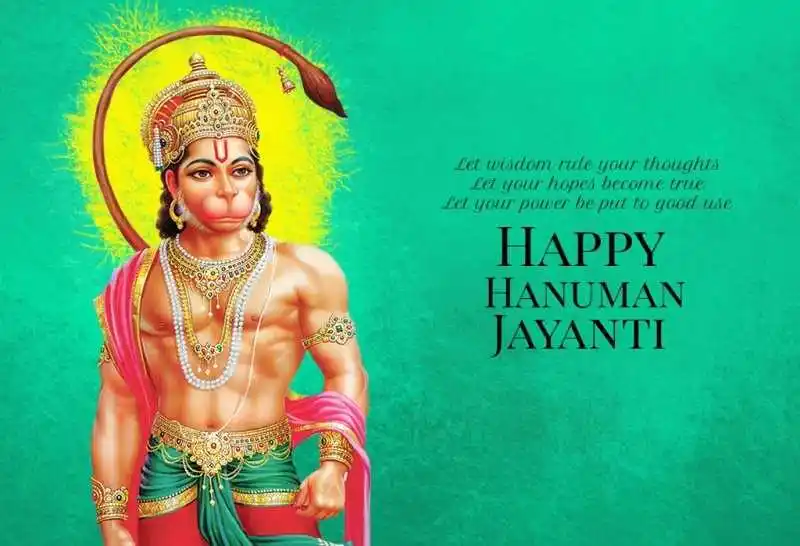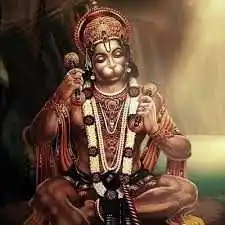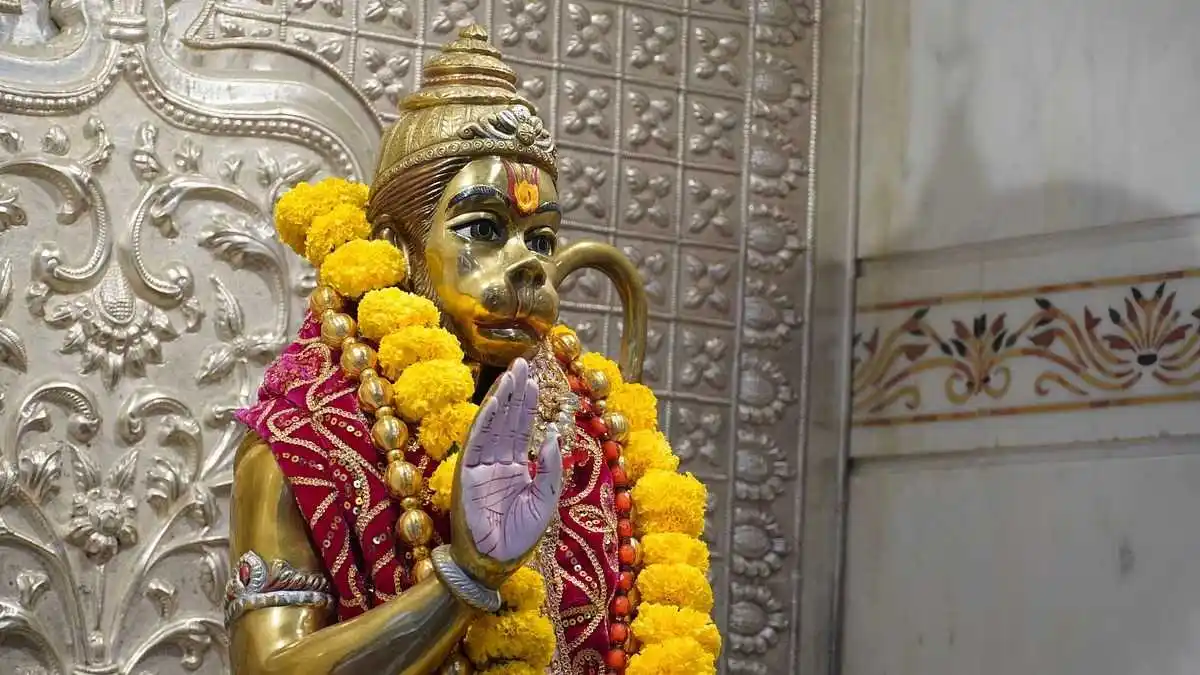Hanuman Jayanti is an important festival celebrated by Hindus all over the world to honor the birth of Lord Hanuman. Also known as Hanumath Jayanti, it falls on the full moon day in the Hindu month of Chaitra. This year, Hanuman Jayanti is scheduled to be celebrated on the 6th of April, 2023. Lord Hanuman, an incarnation of Lord Shiva, is revered as a symbol of devotion, strength, and loyalty. Hanuman Jayanti is celebrated with great enthusiasm and devotion in India and other parts of the world where Hindus reside. In this blog, we will delve deeper into the history, significance, and rituals associated with Hanuman Jayanti 2023. We will also explore the various ways in which this auspicious day is celebrated and how you can participate in the festivities to honor Lord Hanuman.
What is Hanuman Jaynati ?
![hanuman-jayanti-img1.jpg]()
Hanuman Jayanti is a Hindu holiday that commemorates the birth of the Hindu deity and one of the Ramayana's protagonists, Hanuman. The festival is celebrated in most Indian states on the full moon day of the Hindu month of Chaitra. (Chaitra Purnima). Hanuman Jayanti is held in Karnataka on Shukla Paksha Trayodashi, during the month of Margashirsha or in Vaishakha, whereas in a few states such as Kerala and Tamil Nadu, it is observed during the month of Dhanu. (called Margali in Tamil). In the eastern state of Odisha, Hanuman Jayanti is celebrated on Pana Sankranti. This day is also known as the Odia new year, which occurs every year on April 13th/14th/15th. It is observed on the fourteenth day of the fourteenth month in northern India.
History and Significance
![hanuman-jayanti-img3.jpg]()
Lord Hanuman is known as the son of Vayu and is also known as Pawanputra and Maruti Nandan, which translates to "son of the Wind God." His other names are Sankatmochan and Dukhbhanjan, and he is thought to help people overcome their difficulties and grief. Hanuman was the son of Anjana, a doomed apsara. After giving birth to Hanuman, she was freed from the spell. According to tradition, Anjana and her husband Kesari prayed to Rudra for a child, and upon his command, Vayu transferred his male energy to Anjana's womb, which is why Hanuman is known as Vayu's son.
Worshipping Lord Hanuman is said to safeguard people from evil and assist them in triumph. While the festival is celebrated on various days throughout the nation, it is most popular during Chaitra. On Hanuman Jayanti, the celebrations commence early in the morning because it is believed that the Lord was born at sunrise. On this day, devotees also read Ramayana and Mahabharat verses and conduct other prayers.
Legend
![hanuman-jayanti-img2.jpg]()
Hanuman is a vanara and the son of Kesari and Anjana. Hanuman is also known as Vayu, the wind god's offspring. His mother, Anjana, was an apsara who was cursed to be born on Earth. When she gave birth to a boy, she was freed from the curse. According to the Valmiki Ramayana, his father, Kesari, was the son of Brihaspati, the king of Sumeru, a region close to the kingdom of Kishkindha. Anjana is said to have prayed to Rudra for twelve years in order to bear a kid. Rudra, pleased with their devotion, gave them the son they desired.
According to Eknath's Bhavartha Ramayana, while Anjana was worshipping Rudra, King Dasharatha of Ayodhya was also conducting the Putrakameshti ritual in order to have children. As a consequence, he was given some sacred pudding (payasam) to share with his three wives, which resulted in the births of Rama, Lakshmana, Bharata, and Shatrughna. By divine decree, a kite snatched a piece of that pudding and dropped it over the woodland where Anjana was worshipping. Vayu brought the falling pudding to Anjana's extended hands, who ate it. As a consequence, Hanuman was born to her.
Celebrations and Customs
![hanuman-jayanti-img4.jpg]()
On this day, Hanuman devotees celebrate him and ask his protection and blessings. They congregate in temples to worship him and make sacred offerings. In exchange, devotees are given prasadam by shrine officials in the form of sweets, flowers, coconuts, tilaka, sacred ash (udi), and holy water from the Ganges. (Ganga jalam). People who worship him also recite devotional hymns and prayers such as the Hanuman Chalisa and read sacred texts such as the Ramayana and Mahabharata.
Devotees attend temples and apply sinduram tilaka from Hanuman's murti to their foreheads. When Hanuman discovered Sita applying sinduram to her forehead, he inquired about the tradition. She replied that doing so would guarantee her husband, Rama, a long life. Hanuman then continued to smear sinduram all over Rama's body, ensuring Rama's immortality.
Celebration in Tamil Nadu and Kerela
Hanuman Jayanti is observed with pomp in Tamil Nadu and Kerala on the New Moon day in the month of Margali (Dhanu), with famous Hanuman temples such as Nanganallur, Namakkal, Suchindram, Thrikkaviyoor, and Alathiyoor participating.
Celebration in Telangana and Andhra Pradesh
In Telangana and Andhra Pradesh, Hanuman Jayanti is celebrated by a diksha of 41 days, beginning on Chaitra Purnima, and concluding on the tenth day during Krishna Paksha in Vaishaka.
Celebration in Maharashtra
Hanuman Jayanti is observed in Maharashtra on the full moon day (prnima) of the Hindu calendar month of Chaitra. According to some holy almanacks (panchngs), Hanuman's birthday falls on the fourteenth day (chaturdashi) of the dark fortnight of the month of Ashvin, while others say it falls on the full moon day of the bright fortnight of Chaitra. Spiritual discourses commence at dawn in a Hanuman temple on this day because Hanuman is believed to have been born during sunrise. During the birth period, spiritual discourse is suspended and food (prasadam) is given to everyone. Spiritual talks are held in the majority of the region's Hindu temples.
Celebration in Odisha
Pana Sankranti (April 13/14/15) is celebrated as Lord Hanuman's birthdate in Odisha. The temples are still crowded, and people recite Hanuman Chalisha all day. Reading the Sundarkaand on this day is also thought to be a religious practise. In the traditional Odia Solar Calendar, this day also symbolises the start of the New Year. The festival takes place on the first day of the traditional solar month of Mea in the solar Odia calendar (the lunisolar Hindu calendar observed in Odisha).
We hope you have gained a deeper understanding of Hanuman Jayanti and its significance. Celebrating the birth of Lord Hanuman is a way of acknowledging the power of devotion, strength, and loyalty. The festival brings together people of all ages and backgrounds to offer prayers and seek blessings for a better future. Hanuman Jayanti 2023 promises to be a special occasion filled with devotion, joy, and celebration. Whether you choose to celebrate it in a traditional or modern way, what matters is that you honor Lord Hanuman and his teachings. So, mark your calendars and get ready to participate in the festivities of Hanuman Jayanti 2023, and may Lord Hanuman shower his blessings upon you and your loved ones. Jai Hanuman!
![birthday occasion]() Birthday Gifts
Birthday Gifts
![anniversary occasion]() Anniversary Gifts
Anniversary Gifts
![women]() Women
Women
![men]() Men
Men
![Couples]() Couples
Couples
![Couples]() Wedding Gifts
Wedding Gifts

 Birthday Gifts
Birthday Gifts
 Women
Women
 Men
Men
 Anniversary Gifts
Anniversary Gifts
 Wedding Gifts
Wedding Gifts




 We now support international payments
We now support international payments
